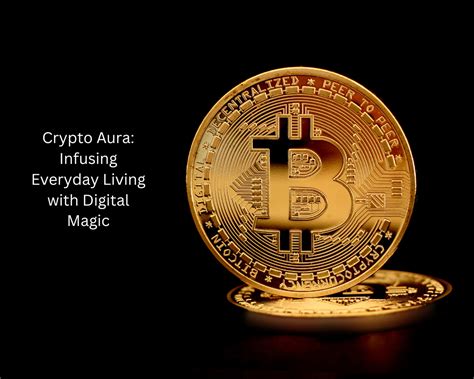
A new cryptocurrency, dubbed “XCoin,” is generating buzz and optimism within the digital asset market, presenting itself as a potential rival to Bitcoin due to its faster transaction speeds and more energy-efficient consensus mechanism. The cryptocurrency’s recent surge in value and increasing adoption rates are fueling speculation that it could offer a viable alternative to the dominant cryptocurrency, though experts caution that significant challenges remain before XCoin can truly challenge Bitcoin’s established position.
XCoin, which launched earlier this year, distinguishes itself through its use of a novel Proof-of-Stake (PoS) algorithm, a stark contrast to Bitcoin’s Proof-of-Work (PoW) system. This PoS mechanism not only allows for significantly faster transaction confirmation times, reportedly averaging under a minute compared to Bitcoin’s average of ten minutes, but also drastically reduces energy consumption, addressing a key environmental concern often associated with cryptocurrency mining. According to XCoin’s developers, the PoS system requires less than 1% of the energy needed to maintain Bitcoin’s network.
The cryptocurrency has experienced a significant upswing in value since its inception, with its market capitalization now exceeding $5 billion. This growth is attributed to several factors, including growing awareness of its technological advantages, strategic partnerships with key players in the blockchain industry, and a proactive marketing campaign targeting environmentally conscious investors. “We believe XCoin offers a more sustainable and scalable solution for the future of digital finance,” stated a spokesperson for the XCoin Foundation, the organization responsible for the cryptocurrency’s development and promotion.
However, despite the optimism surrounding XCoin, analysts are urging caution, noting that Bitcoin’s network effect, widespread adoption, and established infrastructure present formidable hurdles. “Bitcoin has a significant first-mover advantage, and its brand recognition is unparalleled,” explained Dr. Anya Sharma, a blockchain technology researcher at the University of California, Berkeley. “While XCoin offers some compelling technological improvements, it faces an uphill battle in overcoming Bitcoin’s dominance.”
One of the primary challenges facing XCoin is building a robust and decentralized network of validators. In a PoS system, validators are responsible for verifying transactions and maintaining the integrity of the blockchain, and their active participation is crucial for the network’s security and stability. XCoin’s developers are actively incentivizing validators to join the network by offering attractive staking rewards, but attracting a diverse and geographically distributed group of validators remains a priority.
Another critical factor for XCoin’s long-term success will be its ability to foster a vibrant ecosystem of developers and applications. Bitcoin has benefited from a large and active community of developers who have built a wide range of tools and services on top of its blockchain, contributing to its widespread adoption and utility. XCoin’s developers are actively working to attract developers to its platform by offering grants, hosting hackathons, and providing comprehensive documentation.
Moreover, regulatory uncertainty remains a significant challenge for all cryptocurrencies, including XCoin. Governments around the world are grappling with how to regulate digital assets, and the lack of clear and consistent regulations could hinder the growth and adoption of XCoin. The XCoin Foundation is actively engaging with regulators to advocate for a balanced approach that fosters innovation while protecting consumers.
The competition between XCoin and Bitcoin is not necessarily a zero-sum game. Many experts believe that the cryptocurrency market can accommodate multiple players, each with its own strengths and weaknesses. “The future of cryptocurrency is likely to be multi-chain, with different blockchains serving different purposes,” said Michael Lee, a cryptocurrency investment analyst at Goldman Sachs. “XCoin could carve out a niche for itself as a more sustainable and efficient alternative to Bitcoin for certain use cases.”
XCoin’s success will ultimately depend on its ability to deliver on its promises of faster transaction speeds, lower energy consumption, and a more decentralized network. The cryptocurrency’s developers are confident that they can overcome the challenges ahead and establish XCoin as a leading player in the digital asset market. “We are committed to building a cryptocurrency that is not only technologically superior but also environmentally responsible and accessible to everyone,” the XCoin Foundation spokesperson stated.
The emergence of XCoin highlights the ongoing innovation and evolution within the cryptocurrency space. While Bitcoin remains the dominant cryptocurrency, the rise of alternative cryptocurrencies like XCoin suggests that the market is far from settled. The competition among different cryptocurrencies is likely to drive further innovation and ultimately benefit consumers by providing them with more choices and better services. Investors and users alike will be closely watching XCoin’s progress in the coming months to see if it can truly live up to its potential and challenge Bitcoin’s reign.
The cryptocurrency market is known for its volatility and risk. Investing in cryptocurrencies involves a high degree of risk, and investors should be prepared to lose their entire investment. It is important to conduct thorough research and consult with a financial advisor before investing in any cryptocurrency, including XCoin.
Frequently Asked Questions (FAQs)
1. What is XCoin and how does it differ from Bitcoin?
XCoin is a new cryptocurrency designed to be a more efficient and sustainable alternative to Bitcoin. The primary difference lies in their consensus mechanisms: Bitcoin uses Proof-of-Work (PoW), which requires significant energy consumption for mining, while XCoin uses Proof-of-Stake (PoS), which is significantly more energy-efficient. XCoin also boasts faster transaction speeds compared to Bitcoin. According to its developers, XCoin’s PoS system requires less than 1% of the energy needed to maintain the Bitcoin network.
2. What are the advantages of XCoin’s Proof-of-Stake (PoS) system?
The PoS system offers several advantages:
- Energy Efficiency: It dramatically reduces energy consumption compared to Bitcoin’s PoW system, addressing environmental concerns.
- Faster Transaction Speeds: Transactions are typically confirmed much faster, averaging under a minute, compared to Bitcoin’s average of ten minutes.
- Lower Transaction Fees: PoS systems generally result in lower transaction fees due to the reduced computational requirements.
- Increased Scalability: PoS can potentially handle a higher volume of transactions than PoW, making it more scalable for widespread adoption.
3. What are the main challenges XCoin faces in competing with Bitcoin?
XCoin faces several significant challenges:
- Bitcoin’s Network Effect: Bitcoin has a massive network effect due to its first-mover advantage, widespread adoption, and established infrastructure. Overcoming this requires significant time and effort.
- Brand Recognition: Bitcoin’s brand recognition is unparalleled, making it difficult for new cryptocurrencies to gain traction and trust among the general public.
- Security Concerns: While PoS is considered secure, it is still a relatively newer technology compared to PoW, and potential vulnerabilities could emerge over time.
- Regulatory Uncertainty: The lack of clear and consistent regulations surrounding cryptocurrencies poses a challenge for all digital assets, including XCoin.
- Validator Decentralization: Ensuring a diverse and geographically distributed group of validators is crucial for the security and stability of XCoin’s network.
- Ecosystem Development: Building a vibrant ecosystem of developers and applications is essential for XCoin’s long-term success and utility.
4. How secure is XCoin, and what measures are in place to protect the network?
XCoin’s security relies on its Proof-of-Stake (PoS) consensus mechanism. In a PoS system, validators stake their XCoin holdings to participate in the transaction validation process. The more XCoin a validator stakes, the higher their chance of being selected to validate a block. This incentivizes validators to act honestly, as they risk losing their staked coins if they attempt to manipulate the network. XCoin’s developers are also implementing various security measures, including:
- Regular Audits: Conducting regular security audits by independent third-party firms to identify and address potential vulnerabilities.
- Bug Bounty Programs: Offering rewards to developers who discover and report security bugs in the XCoin codebase.
- Advanced Encryption: Using advanced encryption techniques to protect the integrity and confidentiality of transactions and user data.
- Decentralized Governance: Implementing a decentralized governance system to ensure that the network is resistant to censorship and manipulation.
5. What is the XCoin Foundation, and what role does it play in the cryptocurrency’s development and promotion?
The XCoin Foundation is the organization responsible for the development, promotion, and overall governance of the XCoin cryptocurrency. Its key roles include:
- Technical Development: Overseeing the ongoing development and maintenance of the XCoin blockchain and related technologies.
- Community Building: Fostering a vibrant and engaged community of developers, users, and validators.
- Marketing and Promotion: Promoting XCoin to raise awareness and drive adoption.
- Partnerships: Establishing strategic partnerships with key players in the blockchain industry to expand XCoin’s reach and utility.
- Regulatory Engagement: Engaging with regulators to advocate for a balanced approach to cryptocurrency regulation.
- Grant Programs: Providing grants to developers and researchers working on innovative projects related to XCoin.
- Governance: Implementing and maintaining a decentralized governance system to ensure that the XCoin network is responsive to the needs of its community.
Detailed Analysis and Expanded Context
The emergence of XCoin as a potential Bitcoin challenger underscores the dynamism and continuous evolution of the cryptocurrency market. Bitcoin, as the pioneer and most established cryptocurrency, has enjoyed a dominant position for over a decade. However, its limitations, particularly regarding energy consumption and transaction speed, have paved the way for alternative cryptocurrencies like XCoin to emerge and address these shortcomings.
Bitcoin’s Limitations and the Need for Alternatives:
Bitcoin’s Proof-of-Work (PoW) consensus mechanism, while initially groundbreaking, has become increasingly energy-intensive due to the growing computational power required for mining. This has led to significant environmental concerns and criticisms, particularly as global efforts to combat climate change intensify. Moreover, Bitcoin’s transaction speeds, averaging around ten minutes per transaction, are considered slow compared to traditional payment systems and newer blockchain technologies. This sluggishness can hinder its adoption for everyday transactions and limit its scalability.
XCoin’s Approach: Proof-of-Stake (PoS) and its Advantages:
XCoin’s adoption of Proof-of-Stake (PoS) represents a significant departure from Bitcoin’s PoW model. In PoS, instead of miners competing to solve complex mathematical problems to validate transactions, validators are selected based on the number of coins they hold and are willing to “stake” as collateral. This eliminates the need for energy-intensive mining, resulting in a significantly more sustainable and environmentally friendly system. Furthermore, PoS enables faster transaction speeds as the validation process is less computationally demanding.
The Importance of Energy Efficiency in Cryptocurrency:
The environmental impact of cryptocurrencies has become a major concern in recent years. Bitcoin’s energy consumption has been compared to that of entire countries, raising questions about its long-term sustainability. As environmental awareness grows, investors and users are increasingly seeking out cryptocurrencies that have a smaller carbon footprint. XCoin’s emphasis on energy efficiency could give it a competitive edge in attracting environmentally conscious investors and users.
Transaction Speed and Scalability:
Transaction speed is a crucial factor for the widespread adoption of cryptocurrencies. Consumers expect fast and seamless transactions, similar to those offered by traditional payment systems. Bitcoin’s slow transaction speeds can be a deterrent for users who are accustomed to instant payments. XCoin’s faster transaction speeds, enabled by its PoS system, could make it a more attractive option for everyday transactions and increase its scalability for a larger user base.
The Network Effect and Bitcoin’s Dominance:
Despite its limitations, Bitcoin benefits from a powerful network effect. Its widespread adoption, established infrastructure, and large community of developers create a significant barrier to entry for new cryptocurrencies. Overcoming this network effect requires XCoin to offer compelling advantages that outweigh the benefits of using Bitcoin. This includes not only technological improvements but also a strong community, robust ecosystem, and effective marketing strategy.
Building a Strong Ecosystem:
A vibrant ecosystem of developers and applications is essential for the long-term success of any cryptocurrency. Developers create the tools and services that make the cryptocurrency useful and accessible to a wider audience. A strong ecosystem also fosters innovation and ensures that the cryptocurrency remains relevant and competitive. XCoin’s developers are actively working to attract developers to its platform by offering grants, hosting hackathons, and providing comprehensive documentation.
Regulatory Landscape and its Impact:
The regulatory landscape surrounding cryptocurrencies is constantly evolving. Governments around the world are grappling with how to regulate digital assets, and the lack of clear and consistent regulations creates uncertainty for businesses and investors. The XCoin Foundation is actively engaging with regulators to advocate for a balanced approach that fosters innovation while protecting consumers. Clear and favorable regulations could help to boost the adoption of XCoin and other cryptocurrencies.
The Future of Cryptocurrency: Multi-Chain and Specialized Solutions:
Many experts believe that the future of cryptocurrency is likely to be multi-chain, with different blockchains serving different purposes. Bitcoin may continue to serve as a store of value, while other cryptocurrencies, such as XCoin, may be better suited for everyday transactions or specific applications. This specialized approach could lead to a more diverse and efficient cryptocurrency ecosystem.
Investment Risks and Due Diligence:
Investing in cryptocurrencies involves a high degree of risk. The value of cryptocurrencies can fluctuate wildly, and investors should be prepared to lose their entire investment. It is important to conduct thorough research and consult with a financial advisor before investing in any cryptocurrency, including XCoin. Investors should also be aware of the potential for scams and fraudulent activities in the cryptocurrency market.
The Role of Innovation in Cryptocurrency:
The cryptocurrency market is characterized by rapid innovation. New technologies and ideas are constantly being developed, leading to the emergence of new cryptocurrencies and blockchain applications. This innovation is driving the evolution of the cryptocurrency market and creating new opportunities for businesses and investors. XCoin’s emergence as a potential Bitcoin challenger is a testament to the power of innovation in the cryptocurrency space.
The Importance of Community and Decentralization:
A strong community and a decentralized governance system are crucial for the long-term success of any cryptocurrency. A decentralized community ensures that the cryptocurrency is resistant to censorship and manipulation. A strong community also provides support and resources for developers and users. XCoin’s developers are actively working to build a vibrant and decentralized community around the cryptocurrency.
XCoin’s Long-Term Prospects:
XCoin’s long-term prospects depend on its ability to deliver on its promises of faster transaction speeds, lower energy consumption, and a more decentralized network. The cryptocurrency’s developers are confident that they can overcome the challenges ahead and establish XCoin as a leading player in the digital asset market. However, success is not guaranteed, and investors should carefully consider the risks before investing in XCoin.
Conclusion:
The emergence of XCoin highlights the ongoing innovation and evolution within the cryptocurrency space. While Bitcoin remains the dominant cryptocurrency, the rise of alternative cryptocurrencies like XCoin suggests that the market is far from settled. The competition among different cryptocurrencies is likely to drive further innovation and ultimately benefit consumers by providing them with more choices and better services. Investors and users alike will be closely watching XCoin’s progress in the coming months to see if it can truly live up to its potential and challenge Bitcoin’s reign. The cryptocurrency market, however, remains volatile and unpredictable, warranting caution and thorough research before any investment decisions are made.
The pursuit of a more sustainable and efficient cryptocurrency ecosystem continues, and XCoin’s journey will be a crucial test of whether technological innovation and community engagement can overcome the established dominance of Bitcoin. Only time will tell if XCoin can carve out a significant niche for itself in the increasingly competitive world of digital assets.









